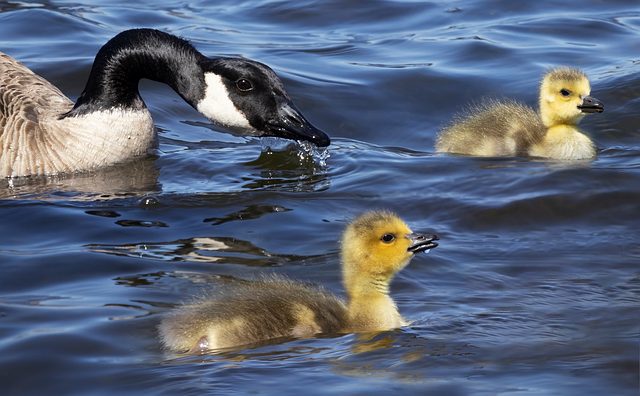Understanding goose behavior is key to managing their presence in urban areas, especially during migration and winter. While they can cause issues like landscape damage and disease spread, professional geese removal services offer humane solutions. Experts use habitat modification and deterrents to keep geese away, ensuring bird welfare and mitigating health risks. After capture, they work with authorities for proper disposal or relocation and provide prevention advice. This holistic approach guarantees effective professional geese removal and long-term solutions protecting public health and bird welfare. Implementing robust health and safety measures post-removal is vital to mitigate potential risks.
Geese can pose significant health and safety risks, from spreading diseases to causing injury with their aggressive behavior. This comprehensive guide addresses minimizing these concerns. We break down the process of professional geese removal, offering a step-by-step approach for effective and humane solutions. Additionally, we explore alternative methods to deter geese presence and provide essential post-removal health and safety measures. Learn how to navigate these challenges safely and efficiently.
Understanding Geese Behavior and Potential Hazards
Understanding Geese behavior is crucial for minimizing health and safety concerns, especially in urban areas where their presence can lead to problematic situations. Geese are social birds that often gather in large flocks during migration and winter months. They have a strong sense of territory and may view human spaces, like parks or gardens, as potential habitats. Professional geese removal services become necessary when these peaceful feathered visitors turn into persistent pests, causing damage to landscapes and potentially posing health risks.
Potential hazards associated with geese include the spread of diseases such as avian flu, as well as bacterial infections from their droppings, which can contaminate water sources and pose a risk to public health. Moreover, aggressive behavior during breeding seasons can lead to physical harm if geese feel threatened or protect their nests. Professional removal experts employ humane methods, such as habitat modification and deterrents, to discourage geese from frequenting problematic areas while ensuring the birds’ well-being.
Professional Geese Removal: A Step-by-Step Guide
When dealing with a goose infestation, it’s crucial to turn to professionals for efficient and humane professional geese removal. The process involves several steps designed to minimize disruption and ensure the safety of both the birds and humans. First, experts assess the situation, identifying the extent of the infestation and determining the best approach. This might include trapping, relocation, or non-lethal deterrents. Once a plan is in place, they implement it with care, using specialized equipment to capture geese humanely without causing harm.
After capture, professional services handle the removal, often working with local wildlife authorities to ensure proper disposal or relocation of the birds. They also offer advice on preventing future infestations through habitat modification and cleaning practices. This comprehensive approach ensures not only effective professional geese removal but also long-term solutions that safeguard both public health and bird welfare.
Alternative Solutions to Deter Geese Presence
When it comes to minimizing geese-related health and safety concerns, alternative solutions to deter geese presence can be highly effective. Professional geese removal services often employ non-lethal methods such as habitat modification, visual and auditory deterrents, and repellents. By altering the environment, these professionals can make areas less appealing to geese without causing harm. For instance, fencing, netting, and physical barriers can restrict access to fields and gardens, while specific odors and sounds can be used to scare them away.
In addition to these practical measures, community education plays a crucial role. Encouraging residents to practice good hygiene, like cleaning up food scraps promptly, can reduce the allure of residential areas for geese. Moreover, promoting the use of deterrents like hawks or dogs as visual predators can further discourage geese from lingering. These alternative solutions not only address the immediate problem but also foster a long-term strategy that considers both human and animal welfare.
Post-Removal Health and Safety Measures
After a successful professional geese removal, implementing robust health and safety measures is paramount to prevent any potential risks associated with their presence. The first step involves ensuring the area is thoroughly cleaned and sanitized to eliminate any traces of bird droppings or feathers, which can carry diseases like salmonella and psittacosis. This includes regular cleaning of surfaces, especially in places frequented by both humans and geese.
Additionally, it’s crucial to address potential hazards created by geese during their removal process. For instance, if geese have been nesting in hard-to-reach areas or on rooftops, proper protective gear should be worn during the removal to avoid any injuries from bird bites or contact with feathers. Regular monitoring of the area post-removal is also recommended to check for signs of goose re-population and take prompt action if necessary, ensuring a safe environment for everyone involved.
In addressing geese-related health and safety concerns, a multi-faceted approach is key. While understanding goose behavior and implementing alternative deterrents can be effective, situations requiring professional geese removal exist. Adhering to strict post-removal health and safety measures ensures a comprehensive solution. For cases that necessitate expert intervention, turning to professional geese removal services offers the most efficient and safe resolution, minimizing potential hazards for both humans and birds.
